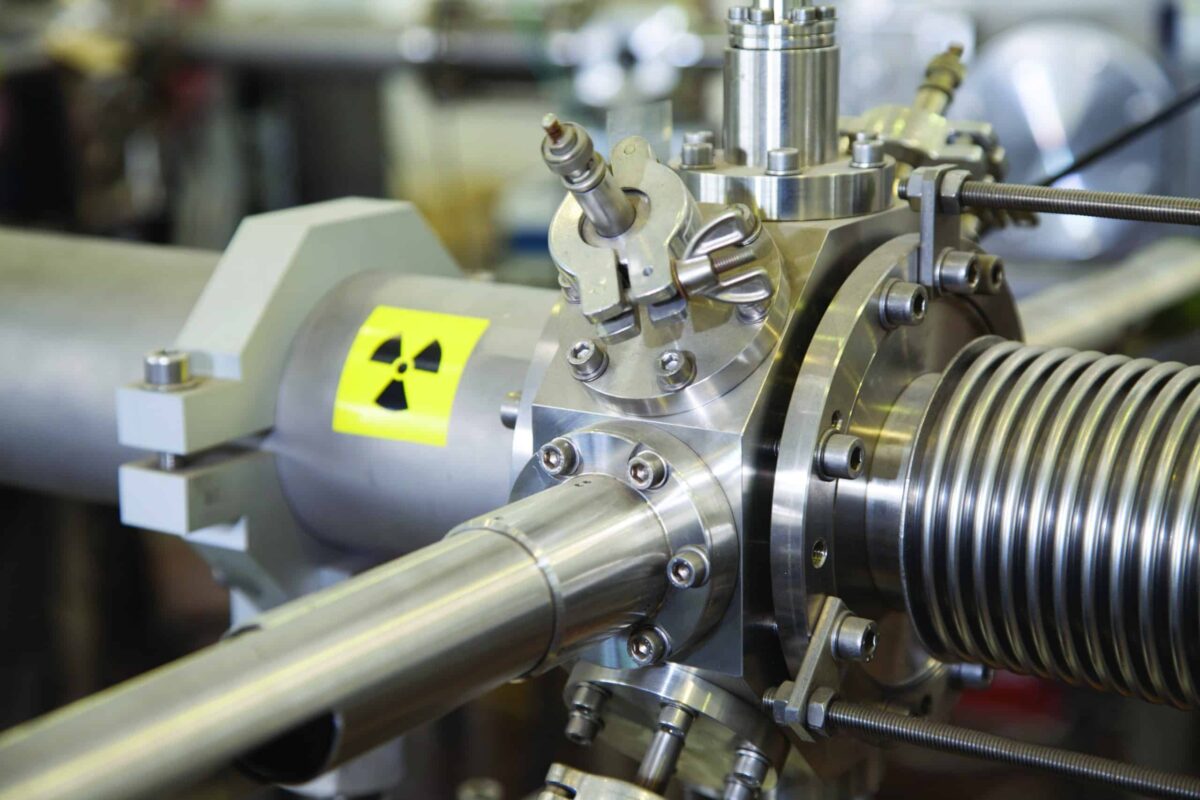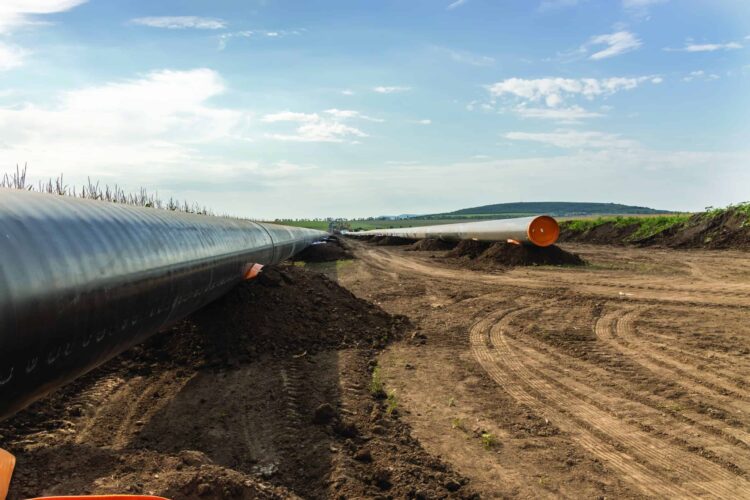Canada Poised to Become a Leader in Small Modular Reactors

Authors: Jodi Wildeman, K.C., Ken Tennenhouse
Small Modular Reactors (SMRs) are a promising new technology that could play an important role in Canada and around the world in the transition to clean energy systems and a low-carbon future.
As a Tier 1 nuclear nation, Canada is uniquely positioned to become a global leader in this emerging technology, which could result in significant economic, geopolitical, social and environmental benefits.
What is an SMR?
SMRs are a new class of nuclear fission reactor that are physically smaller in size and power output than conventional nuclear reactors. The modular design also means that SMRs can be factory-constructed, portable, and scalable to suit local needs.
These attributes allow for a collaborative, fleet-based approach to SMRs in Canada, which involves the development and deployment of a large number of standardized units across multiple jurisdictions. With the support of Natural Resources Canada, various provinces, territories, power utilities, and other key stakeholders have taken important steps to securing a first-mover
advantage by means of this strategy.
Key Events
In November 2018, the Canadian Small Modular Reactor (SMR) Roadmap Steering Committee published “A Call to Action: A Canadian Roadmap for Small Modular Reactors” (the “SMR Roadmap”) which identified that Canada has the capabilities necessary for the successful deployment of SMRs in Canada. The SMR Roadmap suggests the following potential applications for SMRs in Canada:
- On-grid power generation, especially in provinces phasing out coal in the near future.
- On- and off-grid combined heat and power for heavy industry, including oilsands producers and remote mines.
- Off-grid power, district heating, and desalination in remote communities, which currently rely almost exclusively on diesel fuel.
The SMR Roadmap calls for the development of a risk sharing mechanism between governments, utilities, and industry to support early deployment in Canada by offsetting first-of-a-kind (FOAK) risk through appropriate financial and funding mechanisms. It also recommends modernization of legislative and regulatory requirements.
In December 2019, the Premiers of Saskatchewan, Ontario and New Brunswick signed a Memorandum of Understanding (the “MOU”), in which the parties agreed to work collaboratively in support of the development and deployment of SMRs. In 2021, Alberta became an additional signatory to the MOU. As part of this process, the Government of Alberta announced the potential for SMRs to provide reliable, non-emitting, low-cost energy to remote and rural areas and its heavy industry applications to Alberta’s oil sands to reduce carbon emissions in the oil and gas sector. To this end, the Oil Sands Pathways to Net Zero initiative, an alliance of Canada’s largest oil sands producers operating 95% of oil sands production, is pursuing the accelerated application of SMRs to help achieve net zero greenhouse gas emissions from oil sands operations by 2050.
On April 14, 2021, as one of the MOU’s deliverables, the Ontario Power Generation (“OPG”), Bruce Power, NB Power and SaskPower released a feasibility report for their respective provincial governments (the Feasibility Report). The Feasibility Report concluded that the development of SMRs would support domestic energy needs, curb greenhouse gas emissions, and position
Canada as a global leader in this emerging technology.
To make this initiative viable, the Feasibility Report noted that a fleet-based deployment would lower the cost of electricity from SMRs by reducing the timeframe and cost of licensing as well as reducing capital and operating costs. It would also support the potential for deployment of additional SMR generation in Saskatchewan and in other provinces.
The Feasibility Report highlighted that OPG plans to build Canada’s first utility scale 300 MW SMR at the existing Darlington Nuclear Generating Station. The goal is to have its first SMR in commercial operation by the end of 2028. OPG’s experience in licensing, construction and commissioning a first SMR project at Darlington has the potential to reduce the cost and schedule for deployment of a second SMR project in Saskatchewan between 2032 and 2042, with detailed information on the capital and operating costs.
The Selection of SMR Vendors
On December 2, 2021, OPG announced that it selected GE Hitachi Nuclear Energy to deploy an SMR at the Darlington new nuclear site, which is the only site in Canada currently licensed for a new nuclear build. SaskPower has indicated that it is using OPG’s analysis as the foundation for conducting its own vendor assessment, which it is expected to complete by the end of 2021.
Did You Know? Bill Gates Supports Nuclear Power
In June, 2021, Bill Gates (of Microsoft fame) told the Nuclear Energy Institute’s Nuclear Energy Assembly: “We need more nuclear power to zero out emissions in America and to prevent a climate disaster.” Gates is the founder and chairman of TerraPower, which has announced plans to build an advanced nuclear power plant in Wyoming.
Regulatory Framework
Regulatory agencies in Canada are already ramping up to address the SMRs. In October 2019, the Canadian Nuclear Safety Commission (“CNSC”) and the Impact Assessment Agency of Canada (“IAA”) entered into a Memorandum of Understanding to conduct an integrated impact assessment process led by a review panel to ensure that the principle of “one project one assessment” is followed in reviewing designated projects regulated by the CNSC. It also seeks to ensure that any reviews are conducted in an efficient and effective manner, without unnecessary delays or
duplication of effort.
National Indigenous Advisory Council
On December 15, 2021, the Government of Canada announced an investment of $800,000 in the First Nations Power Authority to create a national Indigenous Advisory Council as part of Canada’s SMR Action Plan. The new advisory council met for the first time on November 29, 2021 and is composed of individual First Nations, Métis and Inuit members from Saskatchewan,
New Brunswick, Ontario, Alberta and the territories. The initiative is funded through Natural Resources Canada’s Smart Renewables and Electrification Pathways Program, which encourages Indigenous inclusion in Canada’s energy transition. SaskPower has also partnered with the FNPA to engage with Indigenous peoples and communities across Saskatchewan as it works to achieve net-zero emissions by 2050.
This article is part of The Energy Playbook: 2021 Year in Review which highlights key developments in Western Canada throughout the past year and discusses some of the risks and opportunities for businesses. Download the FREE e-book.
Note: This article is of a general nature only and is not exhaustive of all possible legal rights or remedies. In addition, laws may change over time and should be interpreted only in the context of particular circumstances such that these materials are not intended to be relied upon or taken as legal advice or opinion. Readers should consult a legal professional for specific advice in any particular situation.



